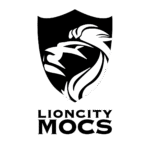
When you think about German WWII vehicles, most people immediately recall the iconic Tiger. But beyond the Tiger, the German army fielded a wide variety of vehicles—each with its own role on the battlefield. From nimble early-war tanks to heavy tank destroyers and even supply trucks, these machines defined the way Germany fought during the war.
Naturally, I had to bring these legends to life in micro-scale! Below you’ll find my custom builds of some of the most famous German vehicles—each with photos, videos, and tutorials so you can build them yourself.
Panzer I – The Beginning

The Panzer I may have been lightly armed with just machine guns, but it marked the start of Germany’s armoured force. Small, fast, and easy to produce, it trained the crews who would later fight in more advanced tanks.
This small vehicle could only hold a crew of two and first saw combat in the Spanish Civil War from 1936-1939.

I tried my best to recreate this in 1:120 scale which proved to be very difficult because of how small the tank is in real life. In fact, in the Micro Brick Battle rulebook, it’s not even listed there, so if you want to use this in the game, you’d have to assign your own attack and defend values.
At only 4 studs in length, I think this might be the smallest tank I’ve made thus far. I was thinking how best to represent the model and since the most prominent part was the turret, I tried to make that stand out. I used minifigure hands to represent the dual machine guns, the only appropriate piece I could find that worked.
Panzer II – A Step Up
The Panzer II improved on its predecessor by adding a 20mm autocannon, giving it a bit more punch. While still underpowered against heavier Allied armor, it played a vital role in the Blitzkrieg campaigns.
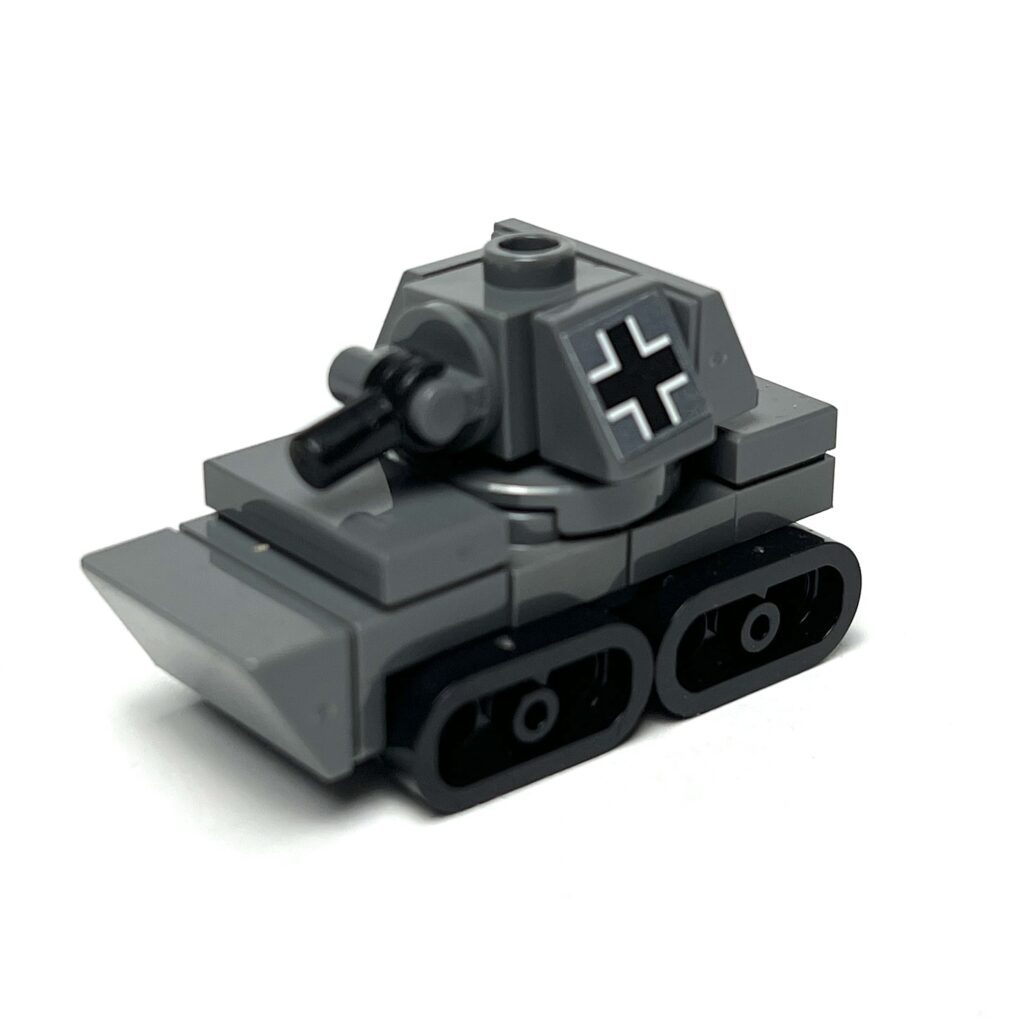
The Panzer II was meant as a interim replacement to its predecessor, until more advanced and bigger tanks were developed. It saw improvements to its amour and weapon, which now sported a single 20mm KwK 30 L/55 auto-cannon. This tank played an important role during the Polish and French campaigns of the war.
The design for this tank was just a slight modification of the Panzer I and change to the turret design, and I found that the short bar with clip(from Brickarms) could imitate the look of an auto-cannon.
Panzer III – The Workhorse
The Panzer III was Germany’s main battle tank in the early years of the war. It came equipped with a 37mm and later 50mm gun, and it served in huge numbers across Europe and North Africa.
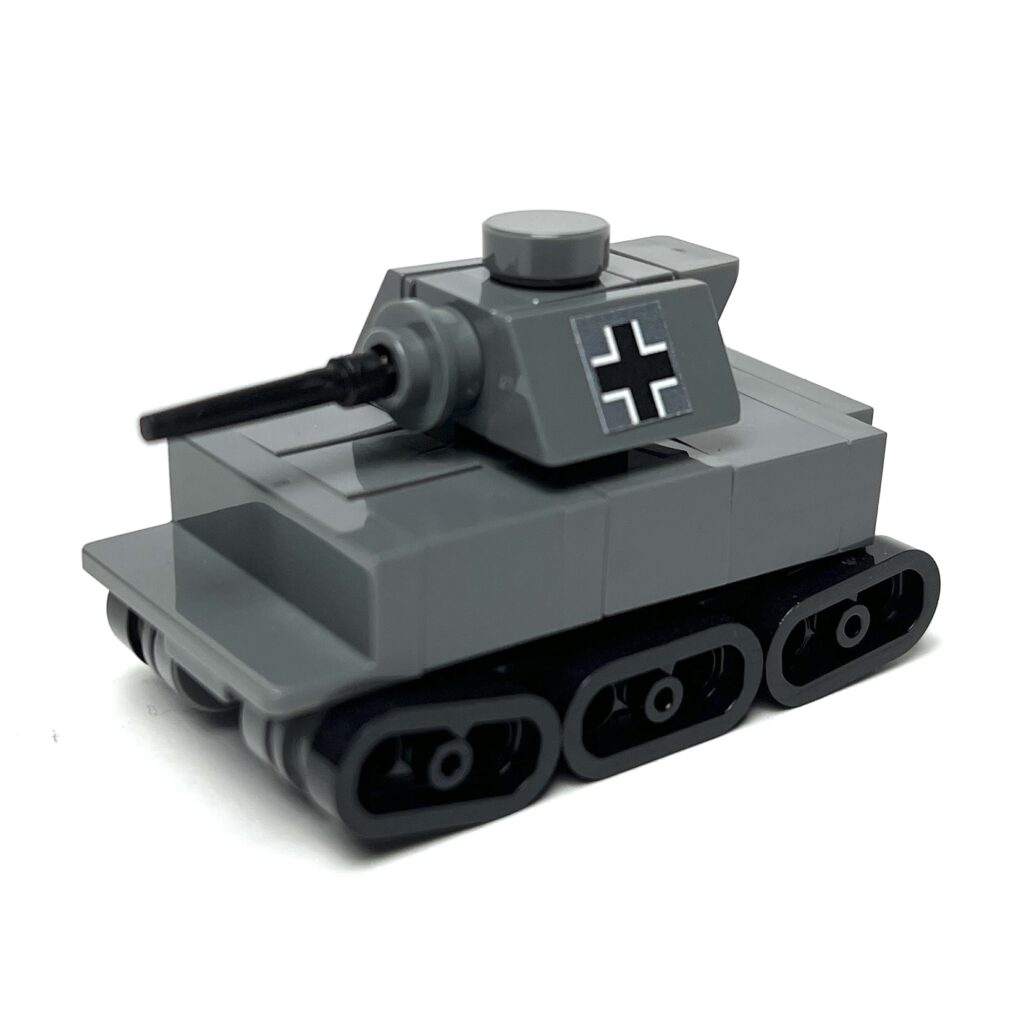
The Panzer III was the first medium tank of the series and was used extensively in WWII as an infantry support type of tank.
Its main gun was a 37mm cannon(Ausf. A-G) and many variants of this was produced with different calibers.
Here you can see the size difference with the light and medium Panzers, and I once again used the Harry Potter wand for the barrel.
Panzer IV – The Backbone of the Wehrmacht
If there was one tank that saw the entire war from start to finish, it was the Panzer IV. Constantly upgraded with thicker armor and more powerful guns, it remained Germany’s most reliable and widely used tank.
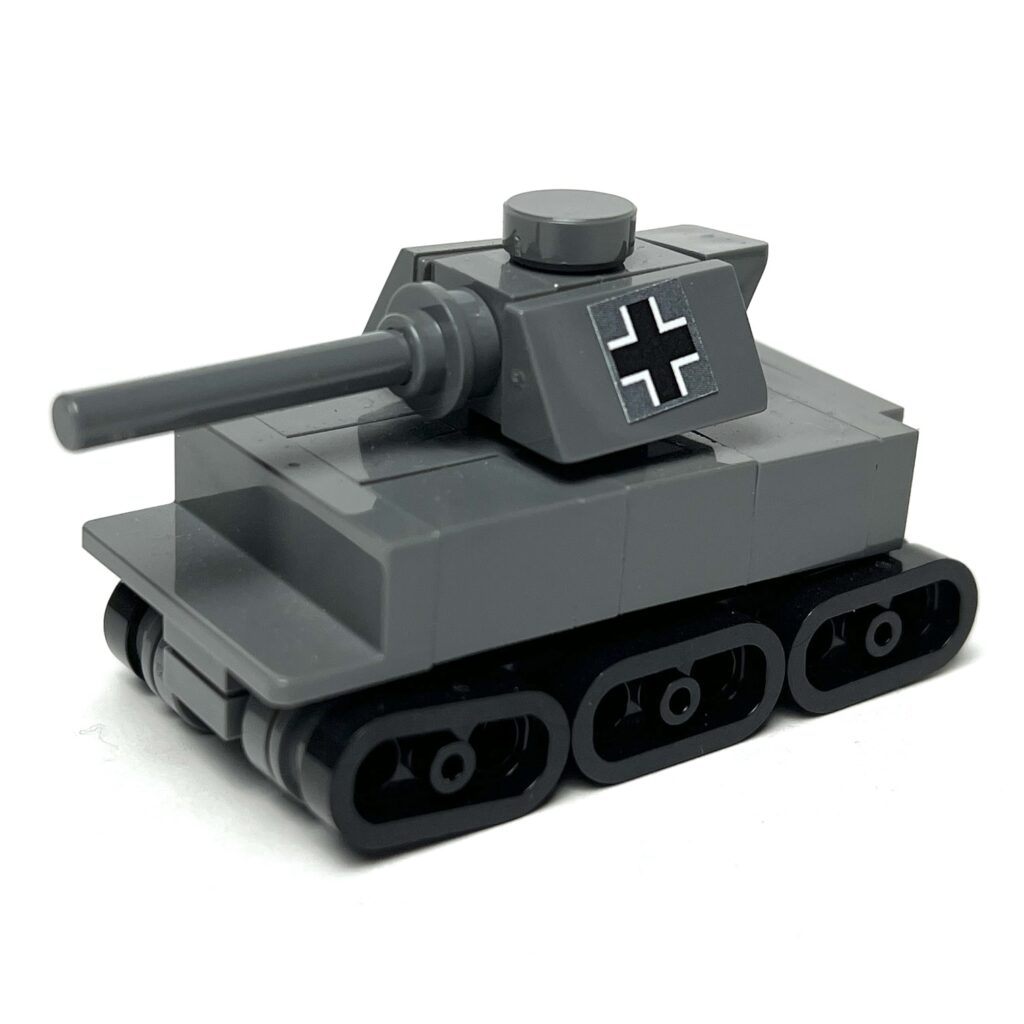
Similar to the III, with an upgrade in firepower. The Panzer IV was manufactured in response to the formidable Russian T-34’s. It was the second most produced German tank in the Second World War with a total of 8,553.
Back to the build, the body for the IV is the same as the III, with only a slight modification on the turret. Swapped out that 37mm for a 75mm, and you can see a 1×3 bar in dark bluish grey does the job.
Now you are ready to have your first game of Micro Brick Battle, you can choose to pit the Shermans(see my other post) against the Panzers!
Elefant – The Beastly Tank Destroyer
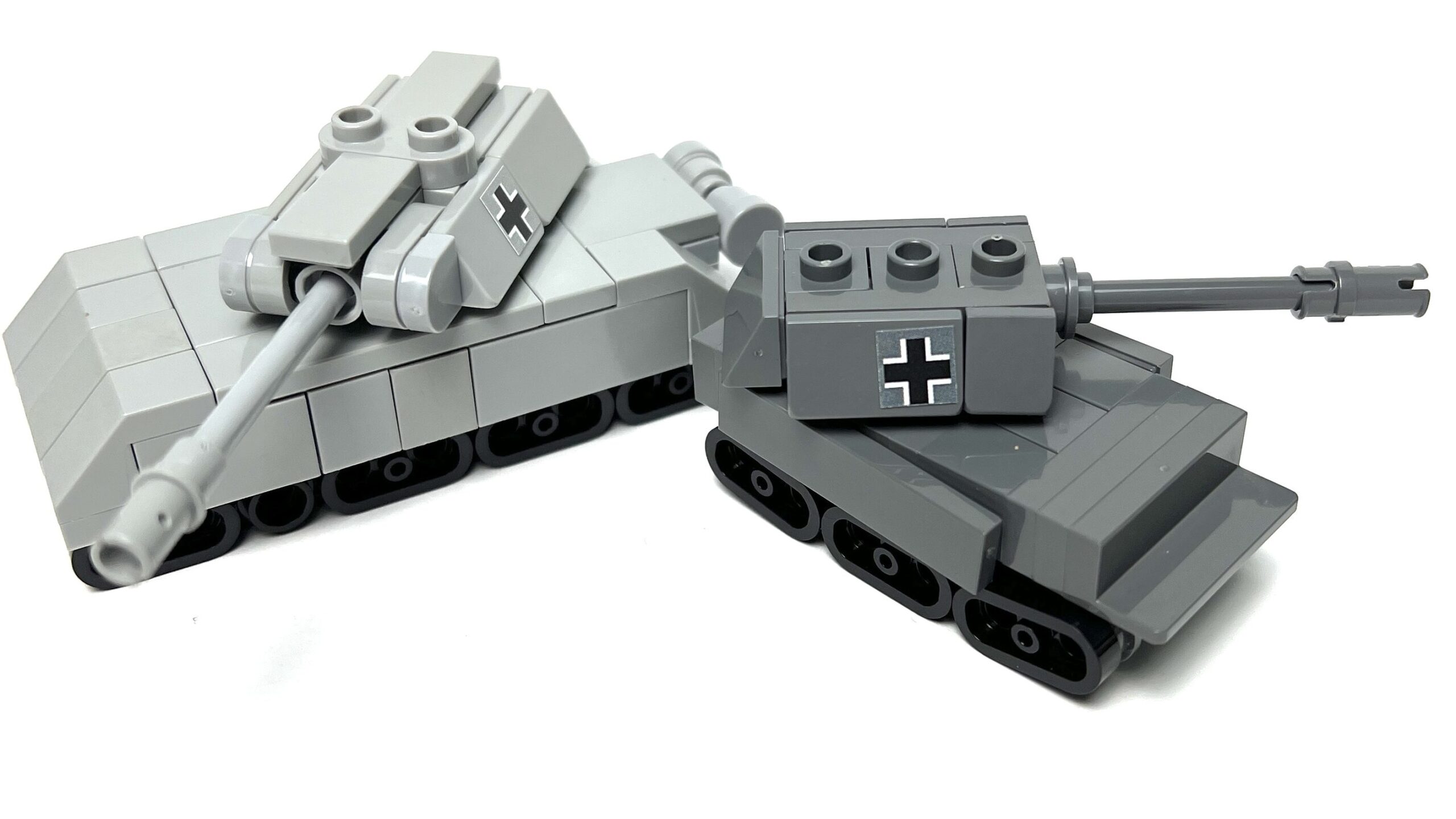
Built on the failed Porsche Tiger chassis, the Elefant was a massive tank destroyer carrying the powerful 88mm Pak 43 gun. While heavily armored, it struggled with mechanical issues and lack of mobility.
Maus – The Super-Heavy Tank
The Maus was the heaviest tank ever built, weighing a staggering 188 tons. Armed with a massive 128mm gun and thick armor that no Allied weapon could reliably penetrate, it was designed to be nearly unstoppable. In reality, only two prototypes were completed, and its size made it impractical for warfare. Still, the Maus has become legendary among tank enthusiasts for its sheer scale and ambition.
Hummel – The Mobile Howitzer
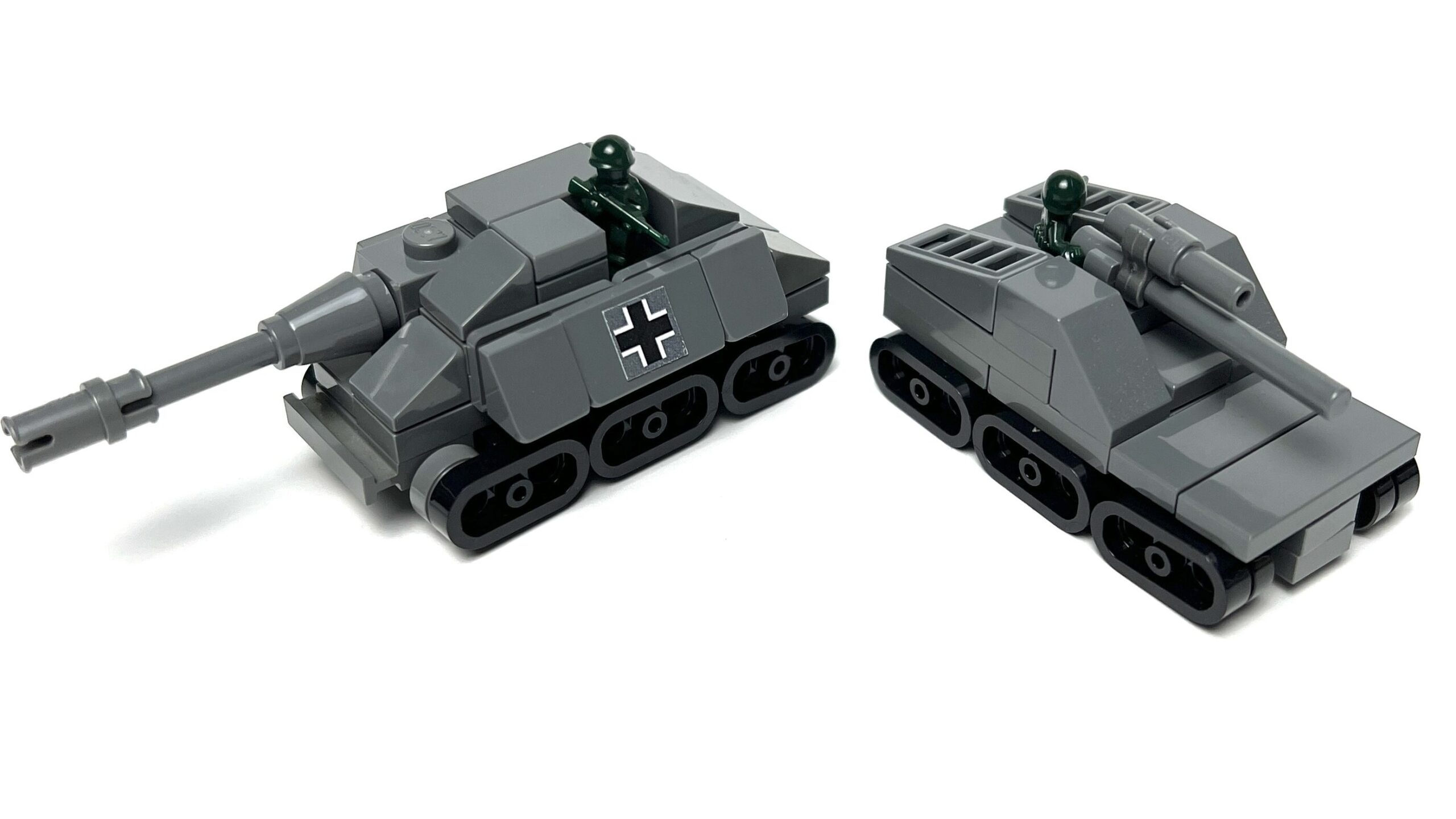
The Hummel (“Bumblebee”) carried a 150mm howitzer, providing crucial artillery support for German divisions. It combined firepower with mobility, making it a dangerous battlefield presence.
Jagdpanther – The Deadly Predator
One of the most feared tank destroyers of the war, the Jagdpanther combined Panther tank armor with the long 88mm gun. It was powerful, well-armored, and deadly effective against Allied tanks.
Opel Blitz – The Workhorse Truck
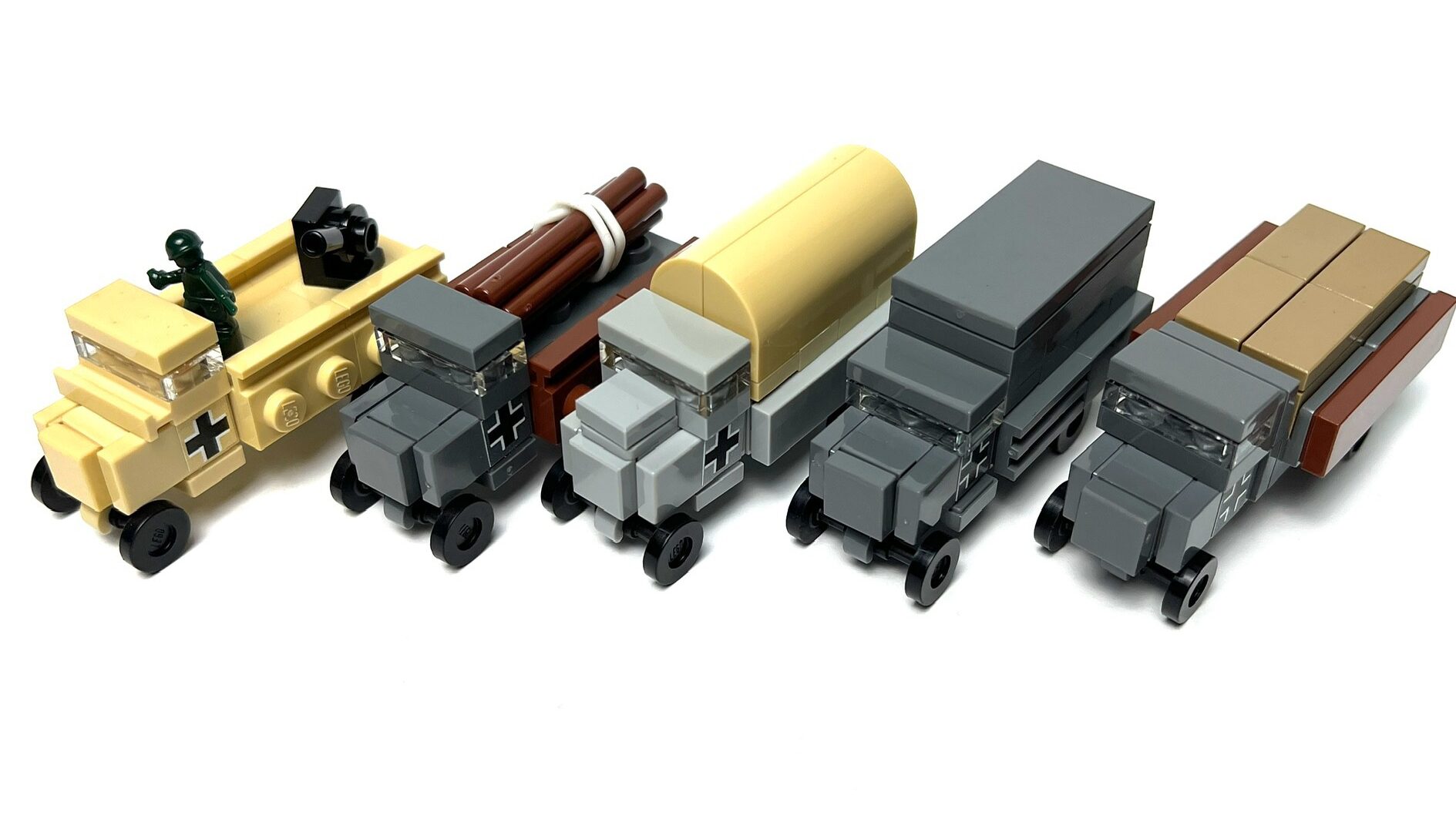
No army runs on tanks alone—the Opel Blitz was Germany’s most common military truck. It transported supplies, troops, and even served as a platform for anti-aircraft guns. Without it, the German war machine would have stalled.
Marder III – Stopgap Tank Destroyer
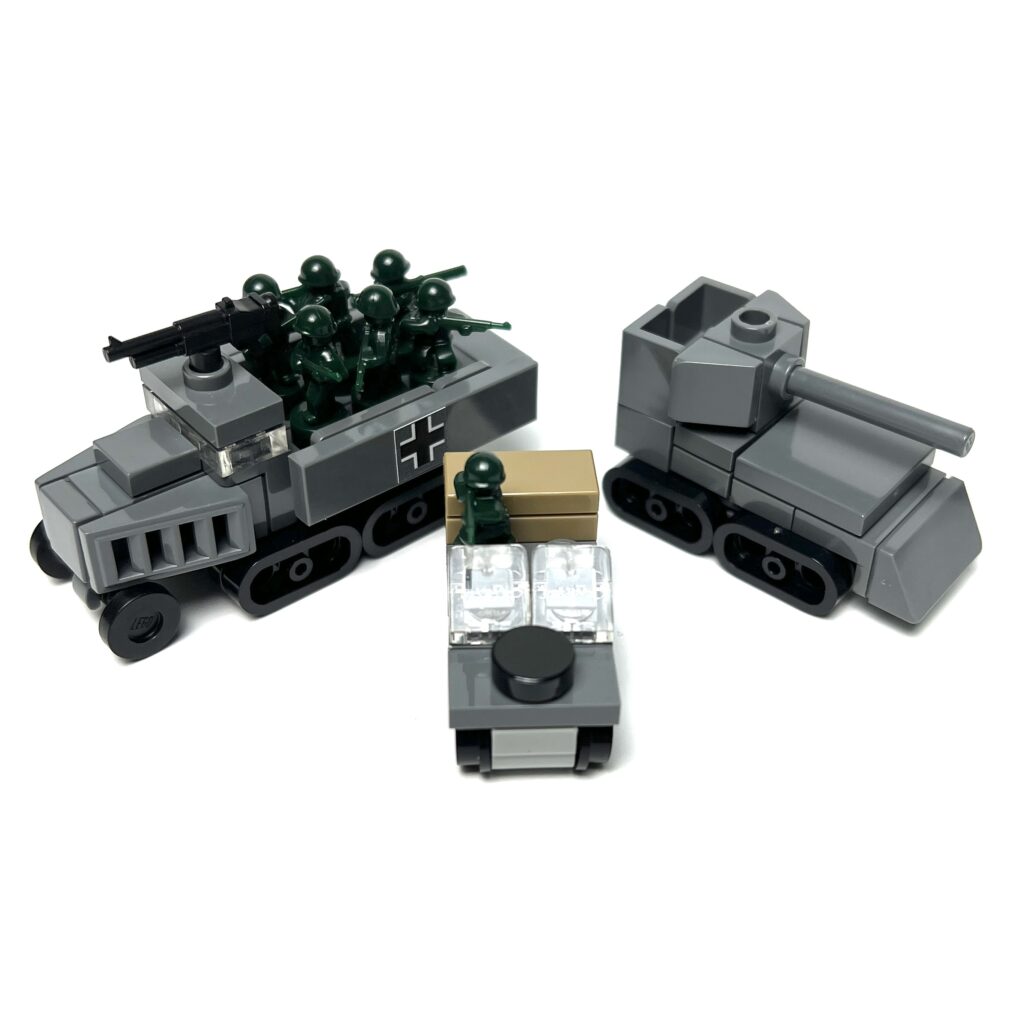
The Marder III was built by mounting captured Soviet or German guns on obsolete tank chassis. While vulnerable due to its thin armor, it gave German forces much-needed firepower against Soviet armor in the mid-war years. In the video below, I show you how to build the Marder III along with a Kubelwagen and Sd.Kfz.251 as a bonus!
If you like my post on this subject, stay tuned and subscribe to my mailing list because there will many more of these coming! Also, leave a comment and let me know what else you would like to see in future posts. Thanks for reading!
Tip: Sort your Lego pieces, it will help you understand the different types and colours available to use in your creations. I personally sort by type and then colour, and after years of doing this I have found that it is the most efficient way for me to find things.
